4,4'-Dimethyltriphenylamine
Modify Date: 2024-01-02 10:48:30
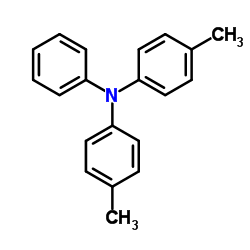
4,4'-Dimethyltriphenylamine structure
|
Common Name | 4,4'-Dimethyltriphenylamine | ||
|---|---|---|---|---|
| CAS Number | 20440-95-3 | Molecular Weight | 273.372 | |
| Density | 1.1±0.1 g/cm3 | Boiling Point | 417.5±34.0 °C at 760 mmHg | |
| Molecular Formula | C20H19N | Melting Point | 112°C | |
| MSDS | N/A | Flash Point | 183.5±22.5 °C | |
| Name | 4-methyl-N-(4-methylphenyl)-N-phenylaniline |
|---|---|
| Synonym | More Synonyms |
| Density | 1.1±0.1 g/cm3 |
|---|---|
| Boiling Point | 417.5±34.0 °C at 760 mmHg |
| Melting Point | 112°C |
| Molecular Formula | C20H19N |
| Molecular Weight | 273.372 |
| Flash Point | 183.5±22.5 °C |
| Exact Mass | 273.151764 |
| PSA | 3.24000 |
| LogP | 6.66 |
| Vapour Pressure | 0.0±1.0 mmHg at 25°C |
| Index of Refraction | 1.627 |
Synonym: Section 2 - COMPOSITION, INFORMATION ON INGREDIENTS
Risk Phrases: None Listed. Section 3 - HAZARDS IDENTIFICATION EMERGENCY OVERVIEW
The toxicological properties of this material have not been fully investigated. Potential Health Effects Eye: May cause eye irritation. The toxicological properties of this material have not been fully investigated. Skin: May cause skin irritation. The toxicological properties of this material have not been fully investigated. Ingestion: May cause gastrointestinal irritation with nausea, vomiting and diarrhea. The toxicological properties of this substance have not been fully investigated. Inhalation: May cause respiratory tract irritation. The toxicological properties of this substance have not been fully investigated. Chronic: Not available. Section 4 - FIRST AID MEASURES Eyes: Flush eyes with plenty of water for at least 15 minutes, occasionally lifting the upper and lower eyelids. Get medical aid immediately. Skin: Get medical aid. Flush skin with plenty of water for at least 15 minutes while removing contaminated clothing and shoes. Wash clothing before reuse. Ingestion: If victim is conscious and alert, give 2-4 cupfuls of milk or water. Never give anything by mouth to an unconscious person. Get medical aid immediately. Inhalation: Remove from exposure and move to fresh air immediately. If not breathing, give artificial respiration. If breathing is difficult, give oxygen. Get medical aid. Notes to Physician: Section 5 - FIRE FIGHTING MEASURES General Information: As in any fire, wear a self-contained breathing apparatus in pressure-demand, MSHA/NIOSH (approved or equivalent), and full protective gear. Dusts at sufficient concentrations can form explosive mixtures with air. During a fire, irritating and highly toxic gases may be generated by thermal decomposition or combustion. Extinguishing Media: Use agent most appropriate to extinguish fire. Use water spray, dry chemical, carbon dioxide, or appropriate foam. Section 6 - ACCIDENTAL RELEASE MEASURES General Information: Use proper personal protective equipment as indicated in Section 8. Spills/Leaks: Clean up spills immediately, observing precautions in the Protective Equipment section. Sweep up or absorb material, then place into a suitable clean, dry, closed container for disposal. Provide ventilation. Section 7 - HANDLING and STORAGE Handling: Wash thoroughly after handling. Remove contaminated clothing and wash before reuse. Use only in a well-ventilated area. Avoid contact with eyes, skin, and clothing. Avoid ingestion and inhalation. Storage: Keep container closed when not in use. Store in a cool, dry, well-ventilated area away from incompatible substances. Section 8 - EXPOSURE CONTROLS, PERSONAL PROTECTION Engineering Controls: Use adequate ventilation to keep airborne concentrations low. Exposure Limits CAS# 20440-95-3: Personal Protective Equipment Eyes: Wear appropriate protective eyeglasses or chemical safety goggles as described by OSHA's eye and face protection regulations in 29 CFR 1910.133 or European Standard EN166. Skin: Wear appropriate protective gloves to prevent skin exposure. Clothing: Wear appropriate protective clothing to prevent skin exposure. Respirators: Follow the OSHA respirator regulations found in 29 CFR 1910.134 or European Standard EN 149. Use a NIOSH/MSHA or European Standard EN 149 approved respirator if exposure limits are exceeded or if irritation or other symptoms are experienced. Section 9 - PHYSICAL AND CHEMICAL PROPERTIES Physical State: Powder Color: white Odor: Not available. pH: Not available. Vapor Pressure: Negligible. Viscosity: Not available. Boiling Point: Not available. Freezing/Melting Point: 112 deg C Autoignition Temperature: Not available. Flash Point: Not available. Explosion Limits, lower: Not available. Explosion Limits, upper: Not available. Decomposition Temperature: Solubility in water: Negligible. Specific Gravity/Density: Molecular Formula: C20H19N Molecular Weight: 273.38 Section 10 - STABILITY AND REACTIVITY Chemical Stability: Stable under normal temperatures and pressures. Conditions to Avoid: Incompatible materials, strong oxidants. Incompatibilities with Other Materials: Strong oxidizing agents. Hazardous Decomposition Products: Nitrogen oxides, carbon monoxide, irritating and toxic fumes and gases, carbon dioxide. Hazardous Polymerization: Will not occur. Section 11 - TOXICOLOGICAL INFORMATION RTECS#: CAS# 20440-95-3 unlisted. LD50/LC50: Not available. Carcinogenicity: N-Phenyl Di-P-Tolylamine - Not listed by ACGIH, IARC, or NTP. Section 12 - ECOLOGICAL INFORMATION Section 13 - DISPOSAL CONSIDERATIONS Dispose of in a manner consistent with federal, state, and local regulations. Section 14 - TRANSPORT INFORMATION IATA Not regulated as a hazardous material. IMO Not regulated as a hazardous material. RID/ADR Not regulated as a hazardous material. Section 15 - REGULATORY INFORMATION European/International Regulations European Labeling in Accordance with EC Directives Hazard Symbols: Not available. Risk Phrases: Safety Phrases: S 24/25 Avoid contact with skin and eyes. WGK (Water Danger/Protection) CAS# 20440-95-3: No information available. Canada CAS# 20440-95-3 is listed on Canada's NDSL List. CAS# 20440-95-3 is not listed on Canada's Ingredient Disclosure List. US FEDERAL TSCA CAS# 20440-95-3 is listed on the TSCA inventory. SECTION 16 - ADDITIONAL INFORMATION N/A |
| Hazard Codes | T+ |
|---|---|
| Risk Phrases | R36/37/38:Irritating to eyes, respiratory system and skin . |
| Safety Phrases | S26-S36 |
| HS Code | 2921440000 |
| Precursor 9 | |
|---|---|
| DownStream 3 | |
| HS Code | 2921440000 |
|---|---|
| Summary | 2921440000. diphenylamine and its derivatives; salts thereof. VAT:17.0%. Tax rebate rate:17.0%. . MFN tariff:6.5%. General tariff:30.0% |
| Bis(4-Methylphenyl)Phenylamine |
| Benzenamine, 4-methyl-N-(4-methylphenyl)-N-phenyl- |
| 4,4'-Dimethyltriphenylamine |
| Phenyl(di-p-tolyl)amine |
| N,N-Di-p-tolylaniline |
| 4,4'-Dimethyl Triphenylamine |
| 4,4'-Dimethyltriphenylamine (DMTPA) |
| EINECS 243-822-7 |
| 4,4′-Dimethyltriphenylamine |
| MFCD00145004 |
| 4,4’-Dimethyltriphenylamine |
| 4-Methyl-N-(4-methylphenyl)-N-phenylaniline |
| 4-methyl-N-phenyl-N-(p-tolyl)aniline |
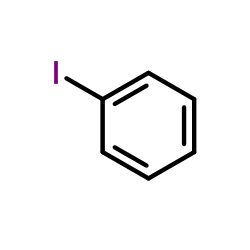 CAS#:591-50-4
CAS#:591-50-4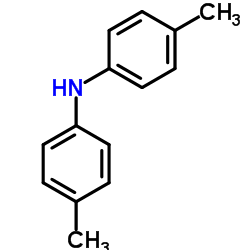 CAS#:620-93-9
CAS#:620-93-9 CAS#:624-31-7
CAS#:624-31-7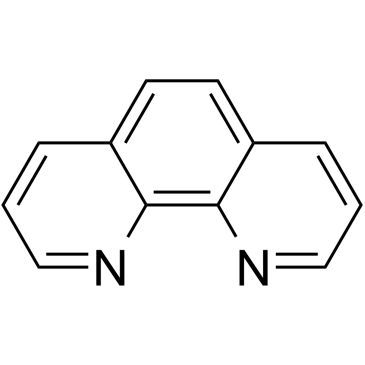 CAS#:66-71-7
CAS#:66-71-7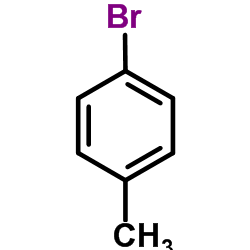 CAS#:106-38-7
CAS#:106-38-7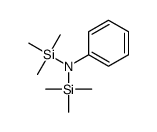 CAS#:4147-89-1
CAS#:4147-89-1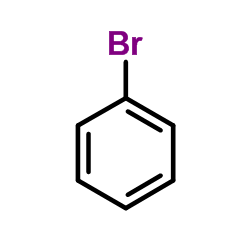 CAS#:108-86-1
CAS#:108-86-1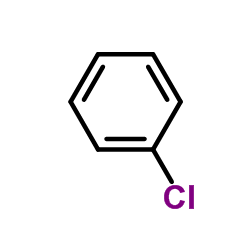 CAS#:108-90-7
CAS#:108-90-7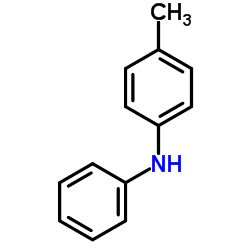 CAS#:620-84-8
CAS#:620-84-8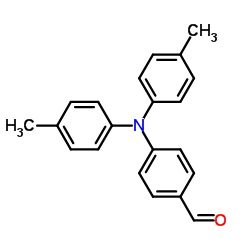 CAS#:42906-19-4
CAS#:42906-19-4 CAS#:58047-42-0
CAS#:58047-42-0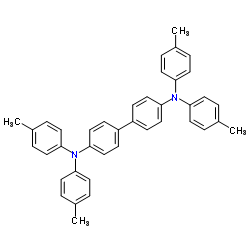 CAS#:76185-65-4
CAS#:76185-65-4
